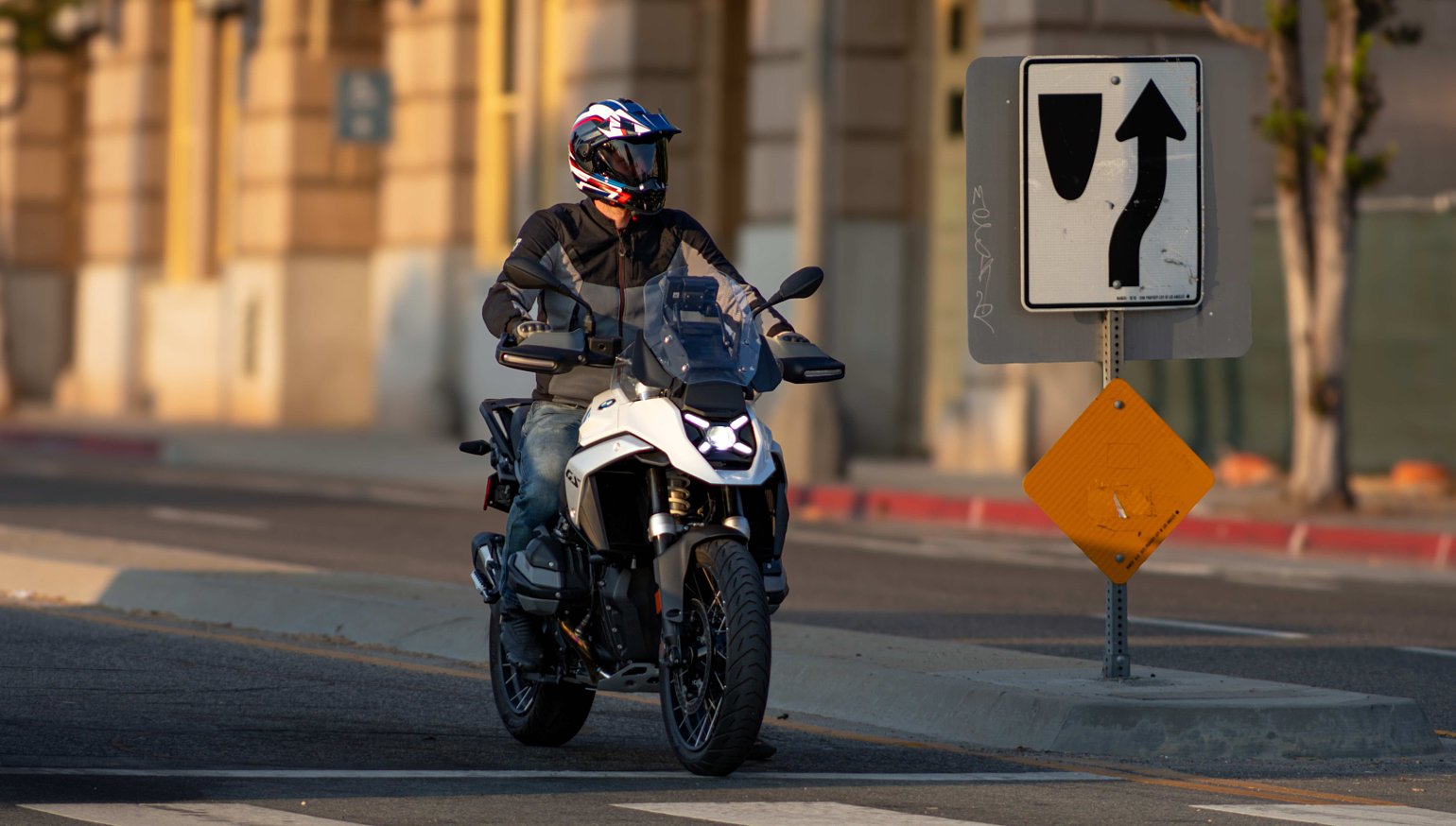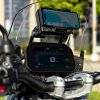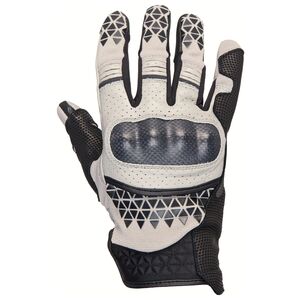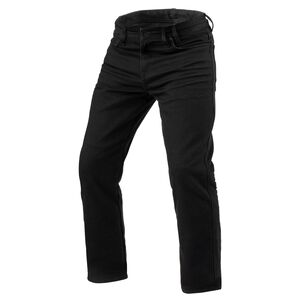Here at Common Tread, our first experience with a new motorcycle is often a brief ride in a faraway land. It’s just enough to get a taste and report back on important updates, but sometimes leaves many questions unanswered. To really learn the ins and outs of a machine, there’s no place like home.
So it was with BMW’s new R 1300 GS. Our man Spenser flew to Spain last October to sample a small platter of GS variants and filed his report. A few months ago, I got word that the updated GS had landed in BMW’s California test fleet and we would have access to one for a longer loan. Time to put Spenser’s quick first take to shame, I figured.
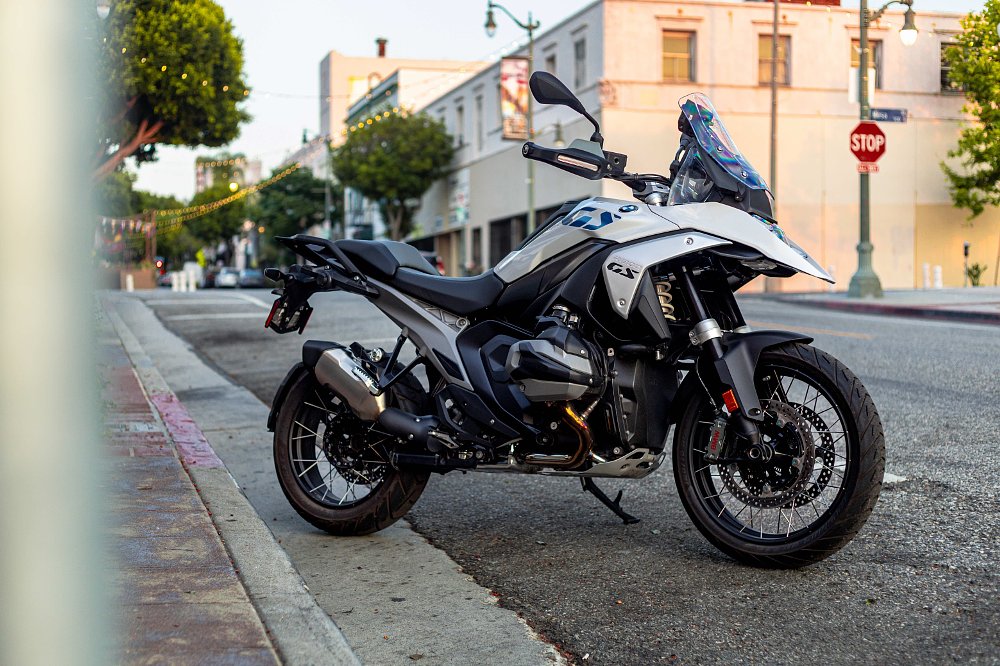
Annoyingly, he did a good job covering the updates to the engine and electronics, not to mention how it all blends together and affects the riding experience. Fundamentally, he didn’t leave many cracks to fill in, but with the whole RevZilla West team — Dustin, Ari, Stephen, Spenser, and yours truly — sharing the bike and asking questions, we did make some progress.
Peeling back the layers
The first item to test was measured weight, which we do with virtually every bike that rolls through our shop but is normally not interesting enough to talk about. In the case of this new GS, though, BMW had done some chest-thumping about how the R 1300 was 23 pounds lighter than the outgoing 1250 variant. In the end, cue the drumroll, the R 1300 GS tipped our scales at 567 pounds, which is two pounds more than the last R 1250 we measured.
But (you knew this was coming), there are some caveats here. The bike we weighed had the Adaptive Vehicle Ride Control option installed, the system that allows the machine to lower itself as it slows down to make the practical seat height more approachable at stops. So, the new sheet-steel frame and aluminum subframe that are said to make the new GS lighter seem to be overwhelmed by another piece of technology sprinkled onto the machine. We can’t be too surprised. As Spenser originally wrote, BMW admitted that the actual weight discrepancy was more likely to be around five pounds for similarly equipped machines, and ultimately it’s going to depend a lot on the spec of each R 1300 GS.
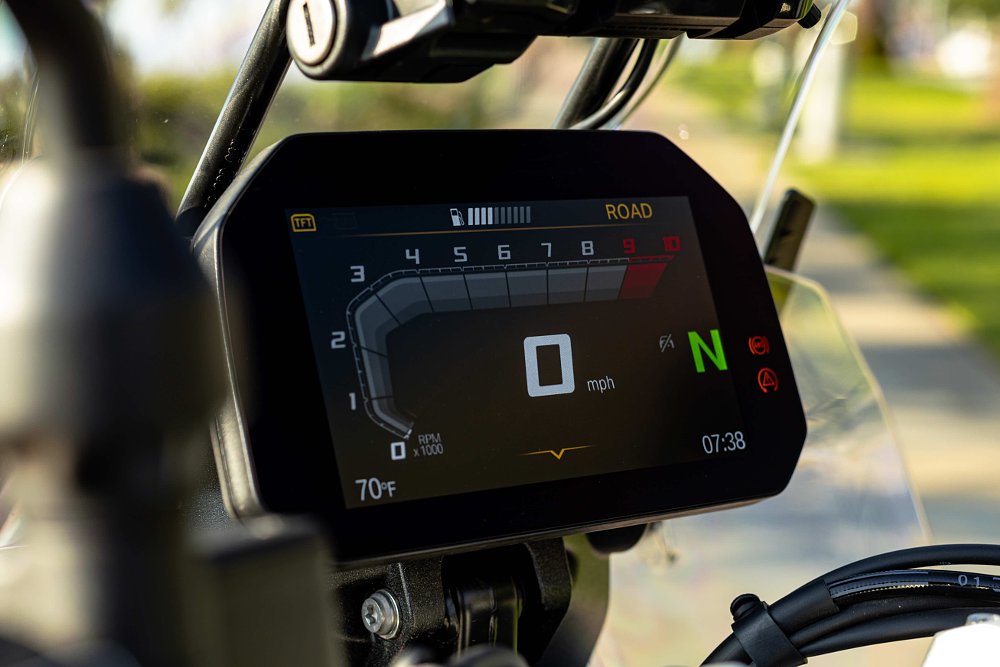
A quick side note there — most of the features draped over this new GS that reviews like this one will address as normal, are add-ons. The base price of an R 1300 GS is technically just under $19,000, but that theoretical spec (extremely rare in the wild) would not include heated grips or seats, an electronic windscreen, a centerstand, all of the ride modes, a quickshifter, chrome on the exhaust, hand guards, radar-informed systems, wire-spoke wheels, and probably a few other things I'm forgetting.
In motion, the bike feels very similar to the R 1250 that it replaces. Even though practically every part is new, BMW clearly guided plenty of effort toward maintaining the feel of The Big GS that everyone has come to know. Nobody on the team denied that the R 1300 GS is fast, luxurious, and positively bristling with technology. There were, however, plenty of criticisms.
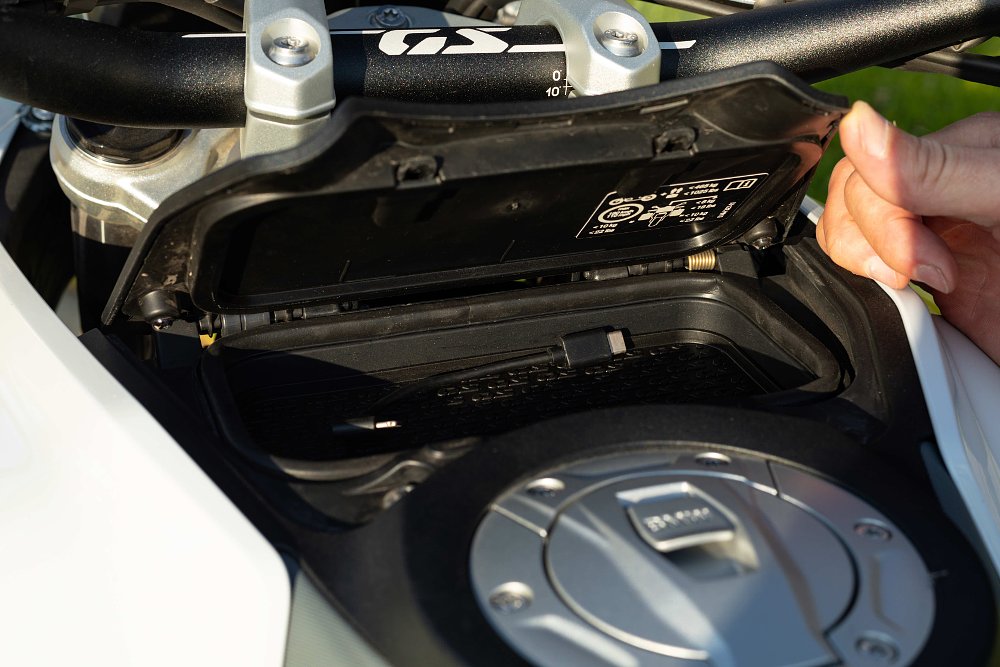
Suspension was on nearly everyone’s list. Ari, Dustin, and Stephen agreed that the GS’s dynamic damping schedules in Road mode were too loose, using the terms “squishy,” “bouncy,” and “soft” respectively. Ari refined the complaint to point out that shifting the bike to Dynamic mode tightens the high-speed compression damping significantly but doesn’t go far enough in addressing low-speed damping.
In other words, while Dynamic mode makes the bike feel stiffer initially, and certainly transmits more of the road surface to the rider, the GS isn’t as stable as you’d expect when hitting large, low-frequency bumps in the middle of a corner. Maybe most surprising is that adjustability is fairly limited for a bike of this stature.
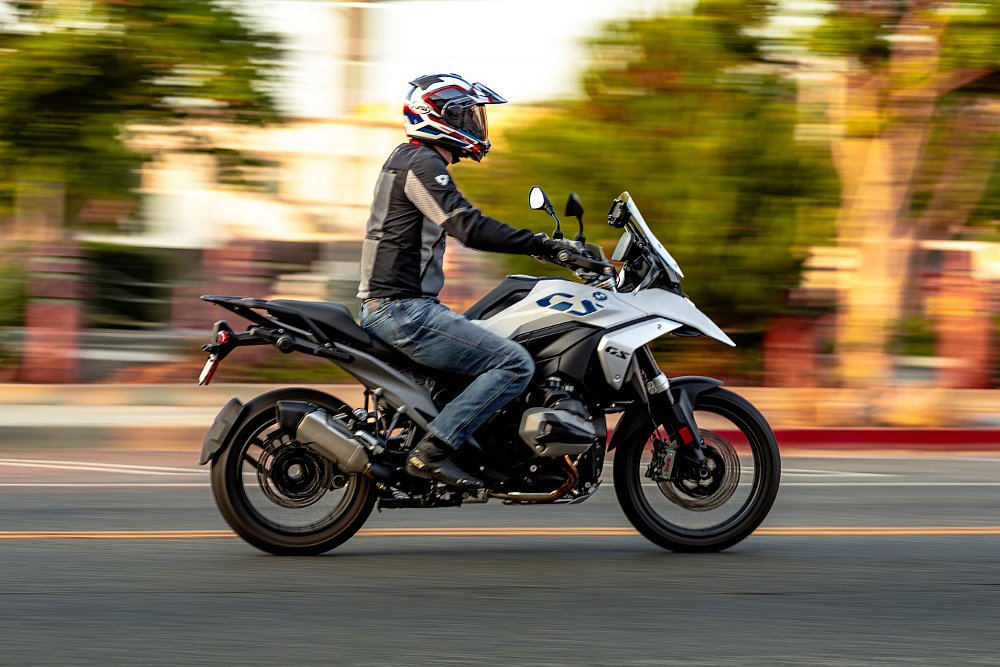
Oftentimes in the past, flagship GS models have offered some amount of manual dictation for the otherwise automatic suspension. As an example, allowing the rider to choose how much weight was on the bike (rider, rider with luggage, rider with passenger, etc.), which was handy for those specific situations but also nice if the rider was alone and simply wanted more spring preload in the rear shock.
Now, as with other big ADVs, how much the suspension sags with everything on board dictates how much spring preload is automatically added, and if you disagree with the assessment your options to combat it are limited to a few settings in the dash, most of which don’t seem quite as satisfying as the older systems.
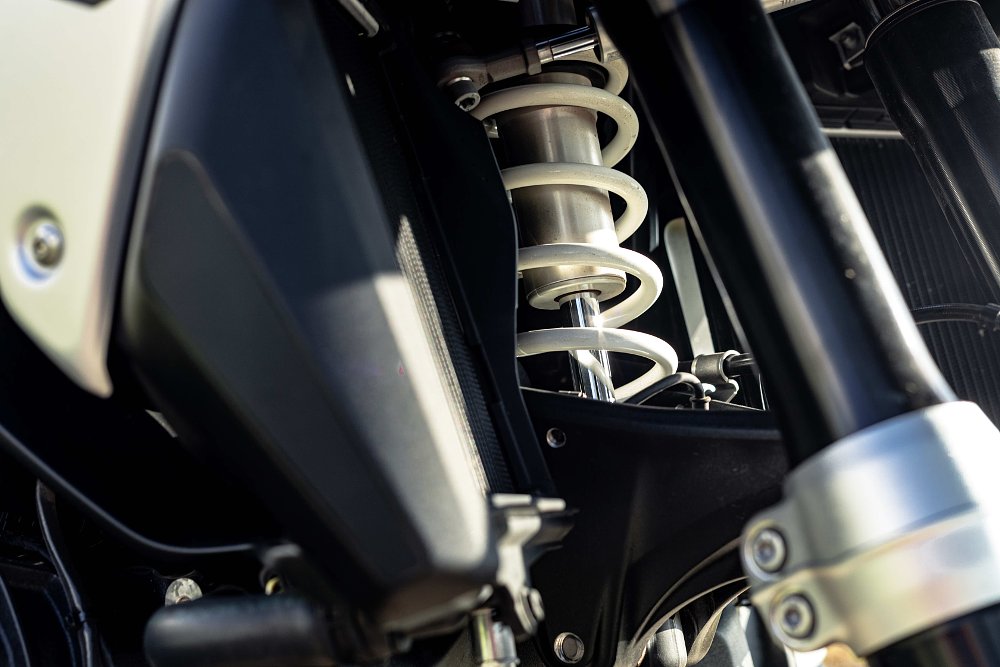
Most people agreed that the Adaptive Vehicle Ride Control was a neat feature, whereby the bike lowers itself as the rider slows down to make the practical seat height lower. Stephen, at five feet, 11 inches tall, commented that it’s the first GS he thinks he ever rode where he could put both feet flat on the ground.
Feeling the system work is intriguing, with the rear of the bike squatting noticeably just before the front shock releases pressure and follows suit. It’s eerie, and complicated, and for many GS riders will be largely unnecessary. But, it’s undeniably functional and for the people interested it will offer a big difference in approachability.
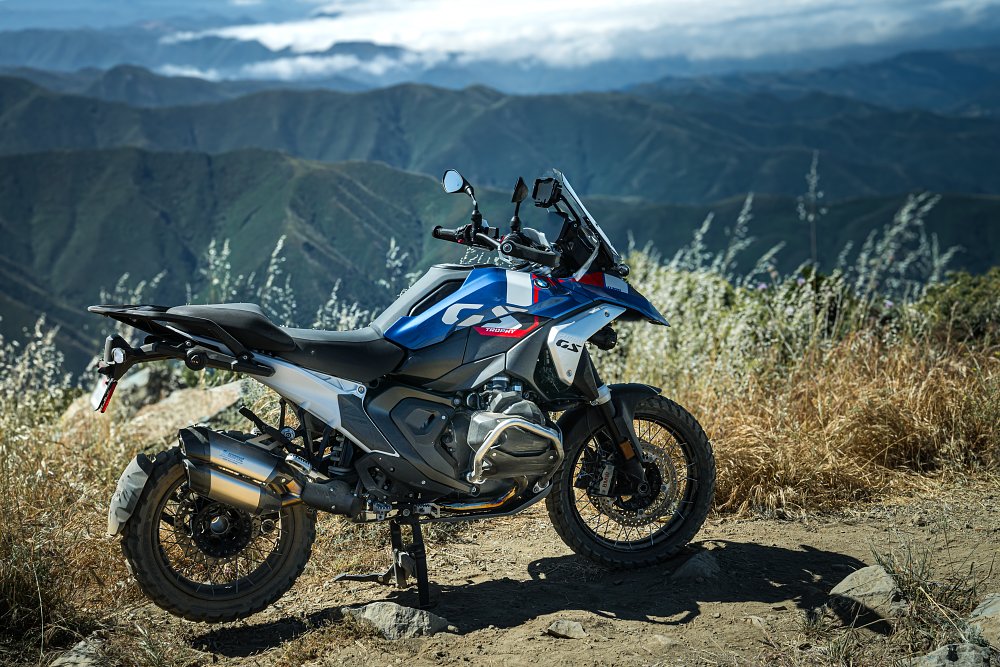
Incidentally, in addition to riding street-spec R 1300 GS models with and without AVRC, I also tested a Trophy-spec GS. That model comes with slightly longer (0.8 inches) suspension and stiffer springs, plus a slew of crash protection options, knobby tires, a taller seat, and fancy paint. I won't claim to have done a comprehensive off-road test, but I did clatter along dirt roads and trails for most of a day. As usual, the GS is too big and heavy to really be a dirt bike and, at the same time, it's absolutely absurd how quickly and confidently it can be ridden on rough terrain. Jumps, potholes, ruts, rocks, roots, it all washes under the GS much more swiftly than it should.
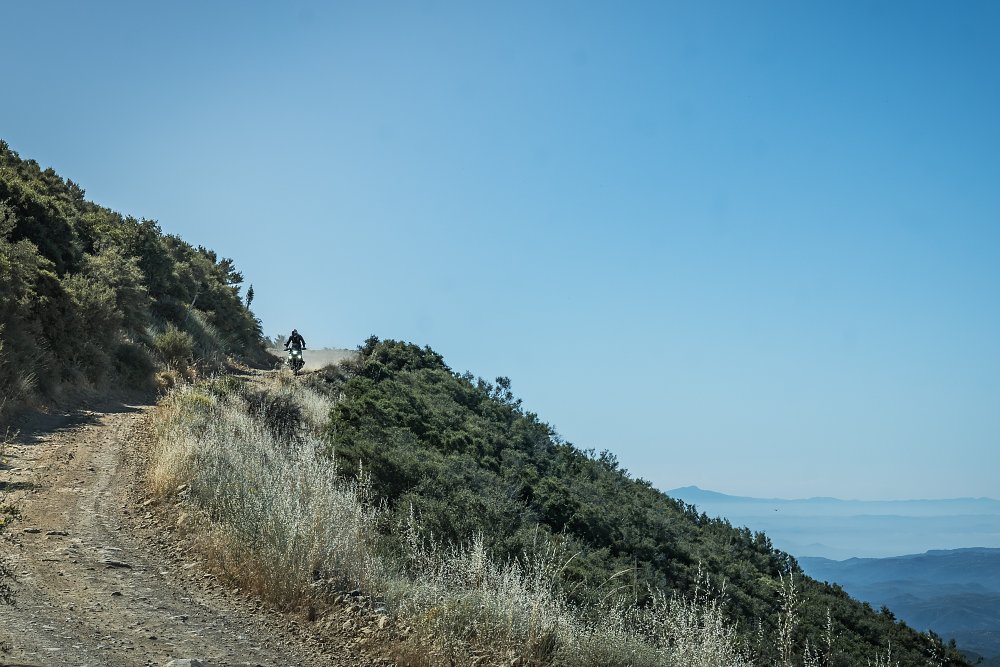
A few other items also bubbled to the top of people’s notes. One being the updated switchgear used to access the ever-expanding suite of luxury items on the GS. Instead of dedicated buttons for, say, traction control or heated grips, a gaggle of the most commonly used items live under the umbrella of a shortcut button. That button can be adjusted to offer quick access to two features (like traction control and heated grips), and leaves the other few features buried slightly in a menu.
Is this a big problem? Probably not, but it shows a clear cross section of how all of the updates have affected the GS’s usability. It has gone from a motorcycle with a single button to toggle traction control or heated grips and a hand crank to raise the windshield, to a machine that always requires a little fiddling and tweaking in a menu to adjust the electronic windshield or provide access to heated things and rider aids.
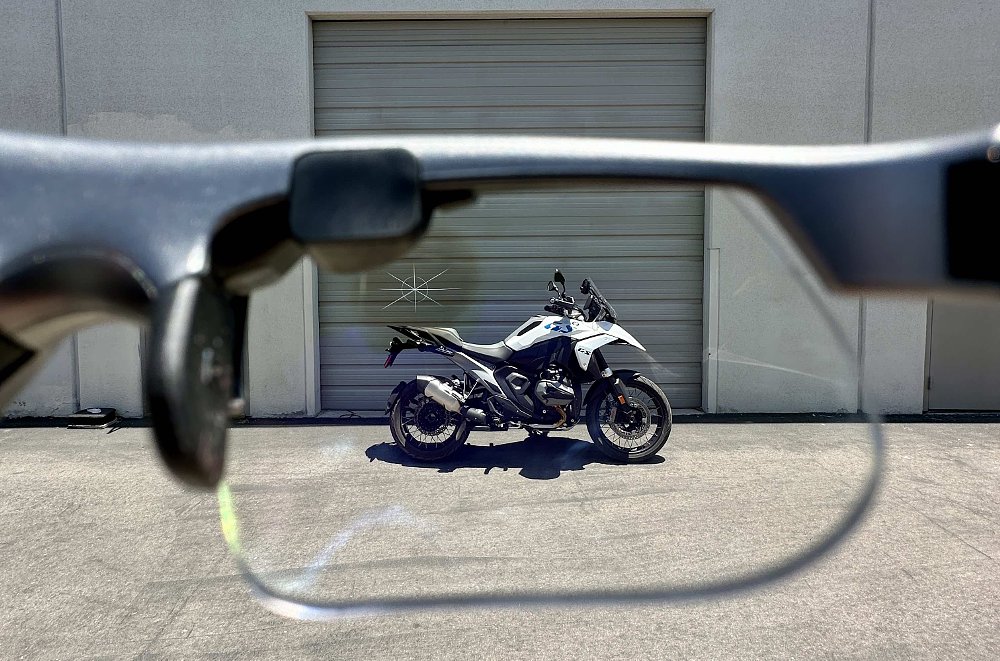
On the topic of answering questions nobody asked, I tried the BMW ConnectedRide Smartglasses. For those unfamiliar, these are a $750 accessory set of glasses that can be worn in the helmet and project a heads-up display onto the lens of certain ride data, like the speedo, gear position, or navigation. In some ways, it’s an elegant solution to provide HUD technology to motorcycling without asking riders to try a helmet or device made by a Kickstarter company.
In practice, the glasses are hard to love. Despite decent adjustability for how they fit my face (and lenses that can be made to match a prescription) it was consistently awkward to arrange them in a way that allowed me to see the data and always seemed quite a bit more difficult than just glancing down at the dash.
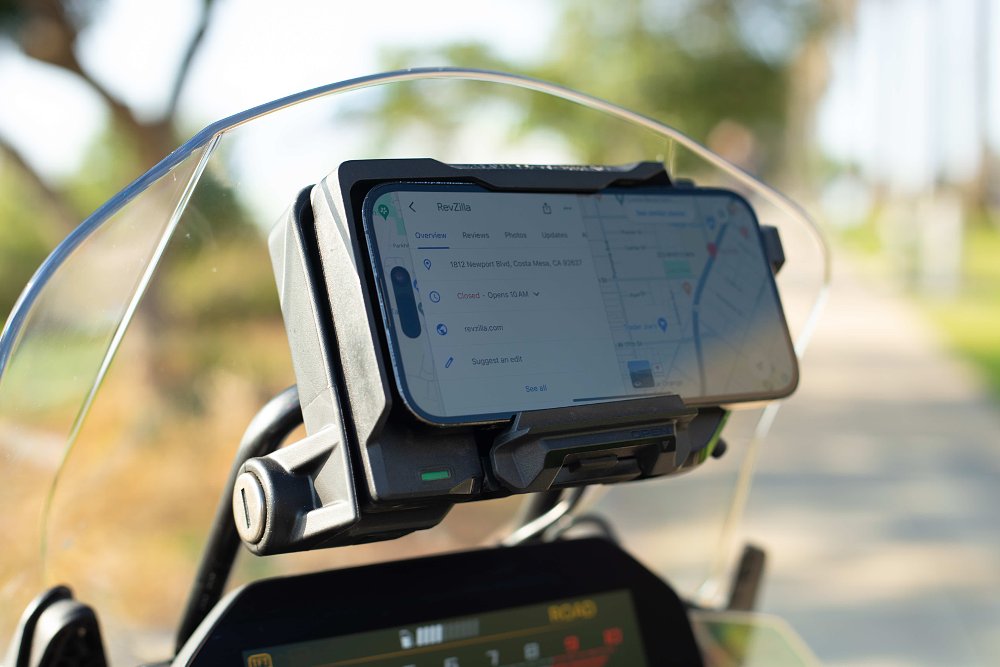
Speaking of looking at screens, one huge feather in BMW’s cap is the option to add a cell-phone mount to the dash of the GS instead of a dedicated GPS mount, as in years past. It cradles just about any phone, charges wirelessly (or via cord), and allows the rider to use their phone as an auxiliary screen or device for GPS or music, rather than some unfamiliar device. Smart.
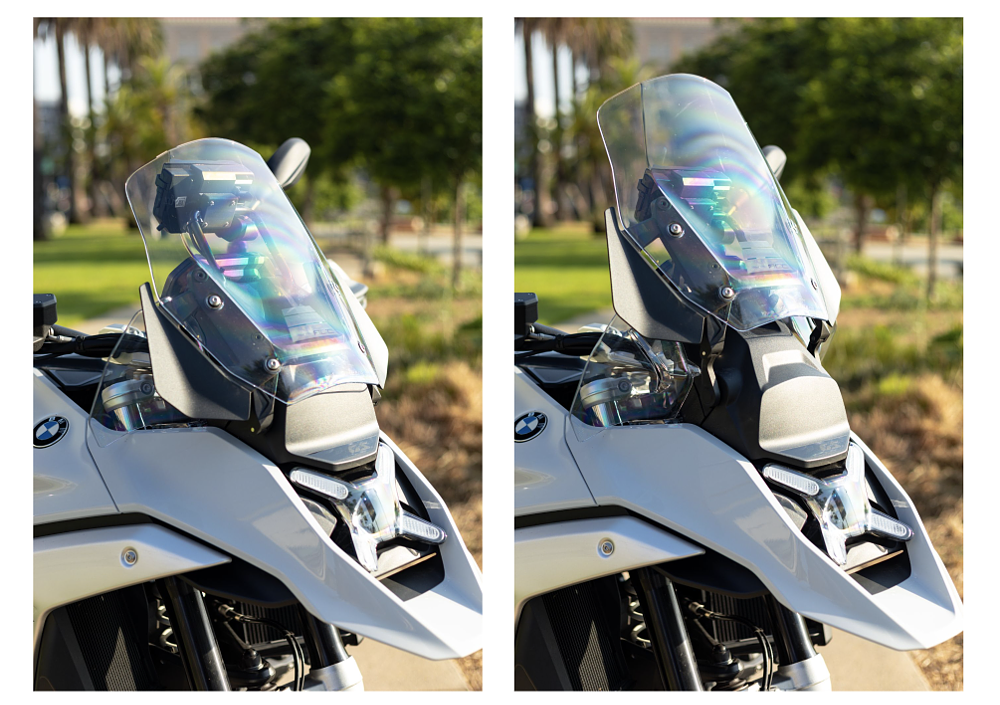
If you get distracted for too long choosing a playlist on Spotify and are about to rear-end the car in front, the R 1300 GS might hit the brakes for you. That’s just one facet of the forward- and rear-facing Continental radar units that enable the adaptive cruise control and blind-spot warning systems. The front-impact warning can be disabled, which is good news for anyone that lives in a place where it’s legal to split lanes — it doesn’t always engage when riding between cars but when it does it’s freaky.
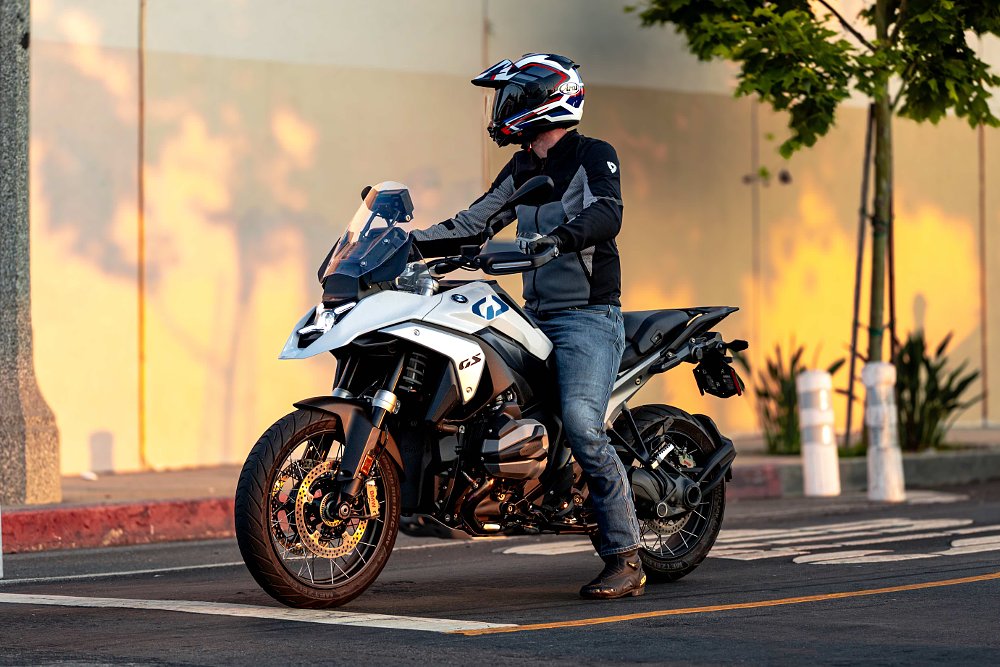
More to the point, the adaptive cruise is great. I find it especially relaxing when riding on a two-lane road away from town and I’m stuck behind a slower vehicle. Letting the bike match the speed at a safe distance until there’s a passing zone makes me less eager and anxious. I’m pro blind-spot warning, too, because I think any layer of added awareness is great, but the good news is that if you hate the little orange triangles warning you about cars you can’t see, it’s easy to shut them off.
Other things we noticed: Ari and Dustin agreed that there’s far too much idle stroke in the front brake lever before the brake engages. I see their point, though it didn’t bother me. Ari went on to discover that the idle stroke disappears if the rider engages the rear brake first, then pulls on the lever for the front. With the brakes being linked, the explanation of crossover in pressure in the system seems clear, but the inconsistency was pretty unforgivable for Ari, and maybe some of you feel the same way.
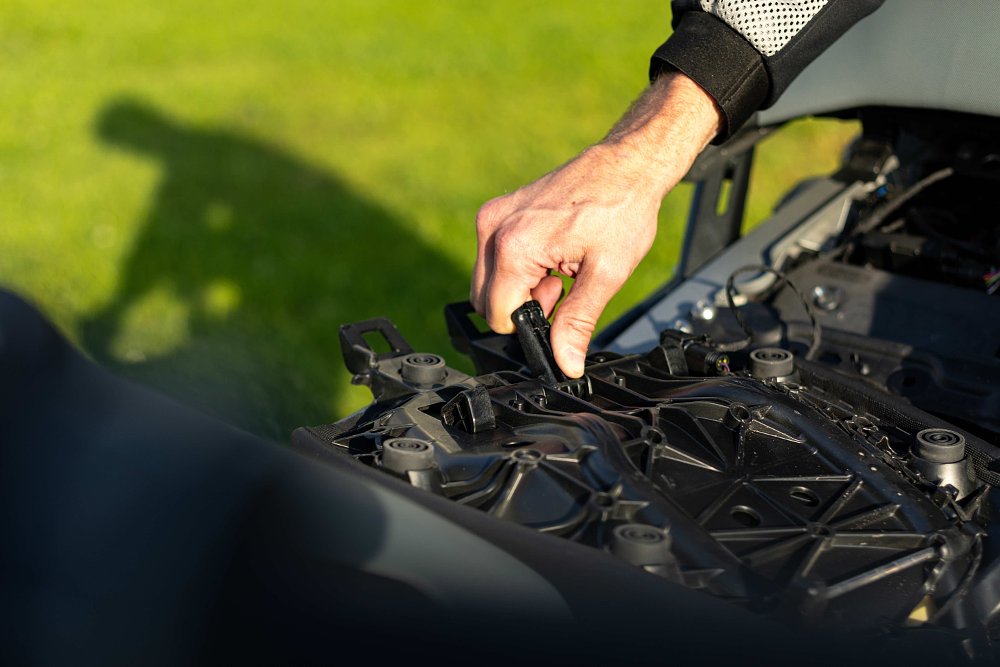
I noted that there’s a lever on the bottom side of the seat unit(s) that compresses the foam inside the saddle and changes the density. Also, the passenger seat on each of the three models we tested was mounted via some kind of spring-loaded pin that lets the seat be lifted and slid forward or back to move where the passenger (or your camping gear) rides. I didn’t find a use for either of these options, but they show how deep and nuanced the GS’s options and adjustments have become.
Where the road leads
All of the comments above from our collective ride notes are little, mostly subjective comments above on different facets of the new R 1300 GS that you may or may not care about. The reason I included them here is that I believe together they add important details to a machine that could be seen as largely unchanged. So much of the new 1300 GS looks and feels the same or similar to the outgoing 1250 model that it’s easy to look the other way and not care.
I would argue that the amalgamation of these changes, and the resulting shift in attitude of the bike is significant. Having to dig through more menus to use seemingly basic features of the bike, and being offered more options with arguably less adjustability than ever means something.
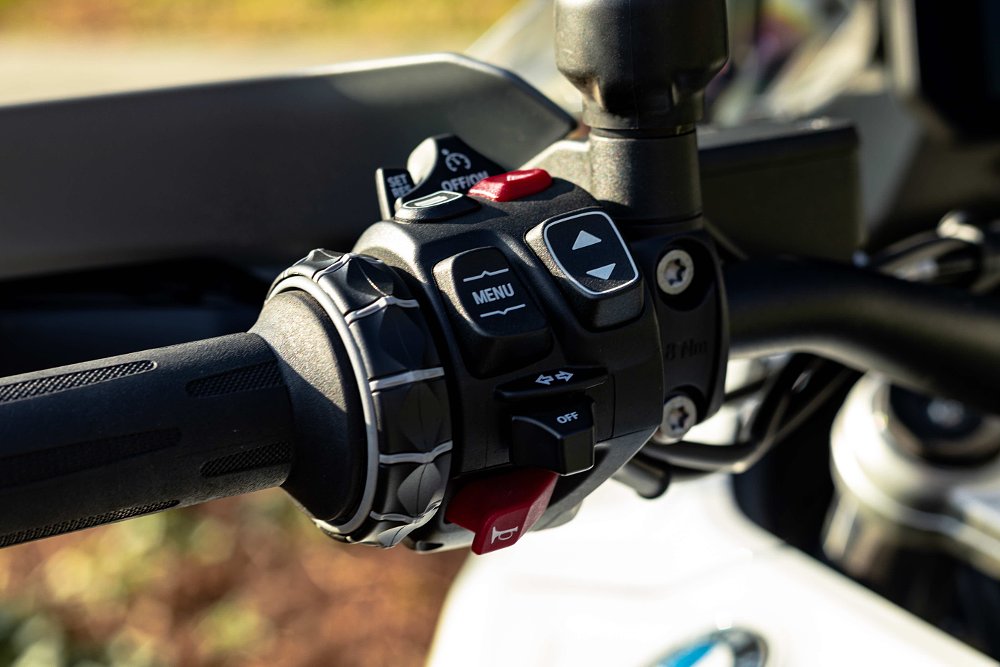
Look at the stamped-steel frame and new subframe. Those parts didn’t appreciably change the measured weight of the GS or the feel of the bike in the middle of a corner. But they look much different. The whole side of the bike has moved clearly toward a smooth and polished panel covering up everything underneath. No more steel-tube exoskeleton poking through; now it looks less rugged and more refined.
I can’t say if that’s a good or bad thing. The largest GS available has always been a good touring bike, so maybe the time has come for it to look the part. The new F 900 GS has certainly stepped into a more aggressive and purposeful off-road role in BMW’s lineup, so in some ways the moves make sense.
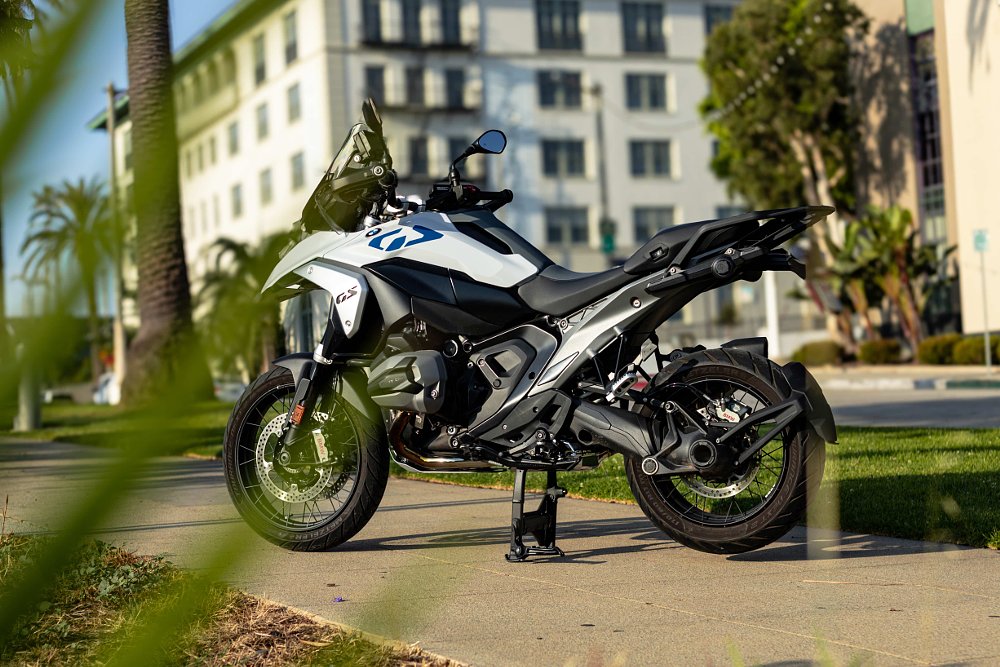
In the face of all of the complaints from the Common Tread team about this motorcycle disappearing slightly behind an increasing cloud of non-mechanical stuff, at its core the GS is still unique and impressive. Nestled among the broad criticisms and nitpicks from my colleagues was at least a little admiration for the GS.
People liked the brakes, the wind protection, and the fact that it feels slimmer than before. They appreciated the luxury, the one-of-a-kind exhaust note, and the foundation of the chassis. Frustrated as I am with the fog of electro thingies getting thicker, I still think it stands as a brilliant piece of engineering. For those reasons and more, no matter how far away some people ride this GS, it’ll still feel like home.
| 2024 BMW R 1300 GS | |
|---|---|
| Price (MSRP) | $24,980 (as tested) |
| Engine | 1,300 cc, air- and liquid-cooled, four-valve, horizontally opposed twin |
|
Transmission, final drive |
Six-speed, shaft |
| Claimed horsepower | 145 @ 7,750 rpm |
| Claimed torque | 110 foot-pounds @ 6,500 rpm |
| Frame | Steel, two-section, with bolt-on rear frame |
| Front suspension | BMW EVO Telelever, electronically adjustable for spring preload and damping; 7.5 inches of travel |
| Rear suspension | BMW EVO Paralever, electronically adjustable for spring preload and damping; 7.9 inches of travel |
| Front brake | Brembo four-piston calipers, 310 mm discs with ABS |
| Rear brake | Brembo two-piston caliper, 285 mm disc with ABS |
| Rake, trail | 26.2 degrees, 4.4 inches |
| Wheelbase | 59.8 inches |
| Seat height | 33.5 inches |
| Fuel capacity | 5.0 gallons |
| Tires | 120/70R19 front, 170/60R17 rear |
| Measured weight | 567 pounds (with AVRC) |
| Available | Now |
| Warranty | 36 months |
| More info | bmwmotorcycles.com |




